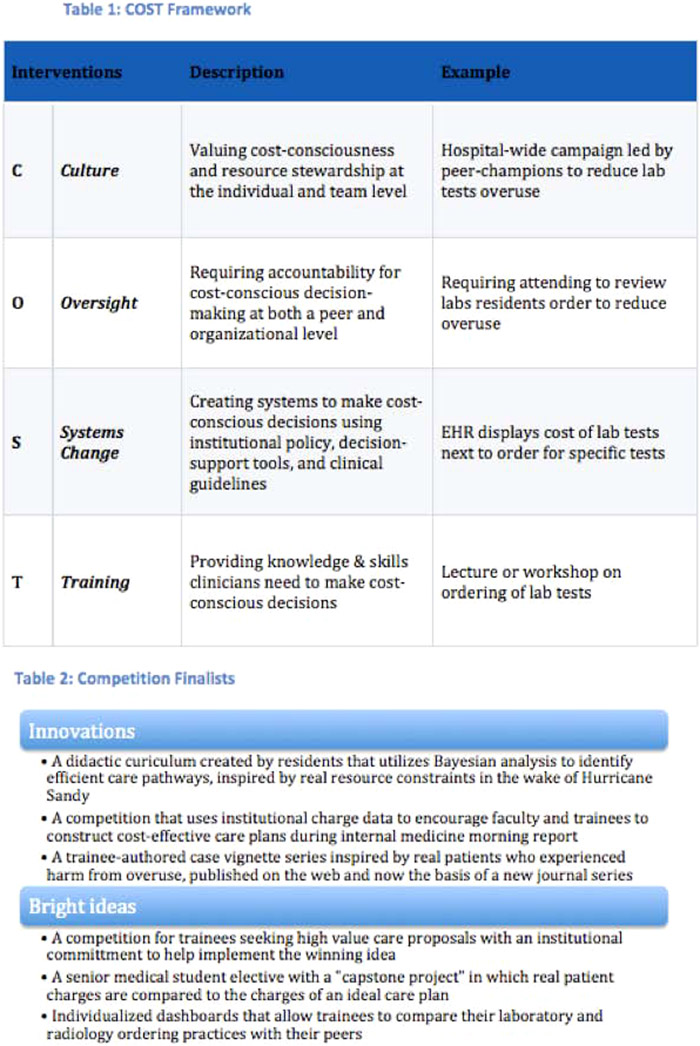Background:
Hospitalists have recently been charged with teaching about healthcare value. To understand how to teach value in ways that are impactful, sustainable, and scalable, the best ideas need to be shared. Due to the rapidly growing field and long delay of publication, we used a crowdsourcing effort, “The Teaching Value & Choosing Wisely Competition,” to identify the most promising efforts and to draw generalizable lessons regarding the best approaches.
Purpose:
This crowdsourcing initiative was designed with four main goals: 1) identify champions of high‐value care in medical education, 2) characterize solutions for teaching high‐value care currently in use by medical educators, 3) catalyze new ideas and methods for teaching high‐value care to trainees, and 4) promote promising ideas that are easily adopted and scaled.
Description:
Submissions were solicited in two categories: “Innovations” representing implemented projects, and “Bright Ideas” representing proposed projects. Many professional societies, including SHM, helped advertise the competition. 74 submissions (28 innovations; 36 bright ideas) were received. Participants included 14 students, 20 residents/fellows, 38 faculty members, and 2 non‐clinical administrators. Submissions represented 14 clinical disciplines.
We scored all abstracts according to two sets of criteria: the FINER criteria, which specifies whether the program is Feasible, Interesting, Novel, Ethical, and Relevant; and a “COST” criteria, developed by our team, to assess areas of impact (Table 1).
Following videoconferences with semifinalist to understand the potential for broader implementation, 10 submissions were given to our expert judges, who ultimately selected six finalists (Table 2).
Conclusions:
The results of our competition demonstrated enthusiasm for teaching value across professional disciplines and specialties. The competition allowed us to share ideas beyond traditional institutional and professional silos, and was able to unearth work that was not yet been published. At least one medical center has already replicated this “contest” model locally, and other hospitals may use this strategy as a way to engage residents and hospitalists in improving value.

